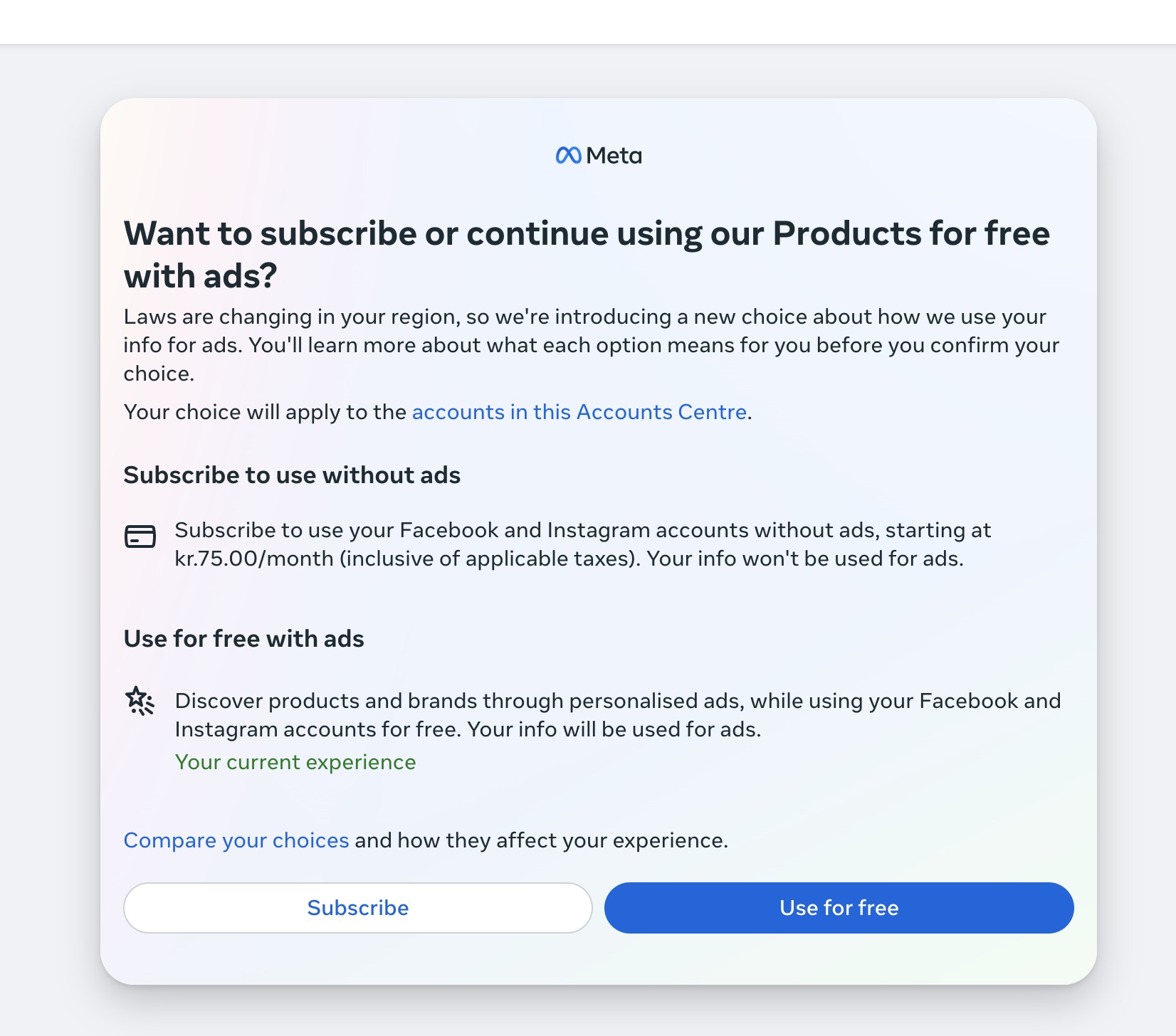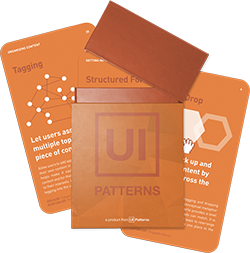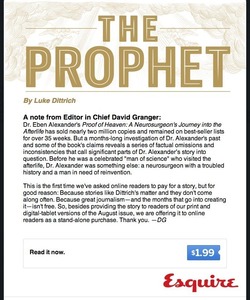Paywall
Design Pattern
Alternate titles: Permission Wall, Sign-Up Wall.
Problem summary
The user needs to pay to get access to a restricted area on a website.
Example

▲ In EU countries, Facebook (Meta) gives users the choice of using their service for free while they show ads, or via a monthly subscription fee – ads free.
Usage
- Use when you need a way of directly making money on the content you produce
- Use when your users are willing to pay for the content you produce
- Use when the perceived value of your content is greater than the amount of money you are requesting for it
- Do not use when your website is solely dependent on making money on banner impressions, as the highest possible number of pageviews is then the most important.
This card is part of the UI Patterns printed card deck
A collection of 60 User Interface design patterns, presented in a manner easily referenced and used as a brainstorming tool.
Get your deck!Solution
Restrict access to users who have paid.
There are a variety of Paywall strategies found in use today. vary. Some strategies close block all content until payment is made, some lure you in with bait and asks for money after viewing an amount of articles, other websites cherry pick content that’s not free for all. Below is an overview of the main variations.
Strategies
- Paywall: All content is behind one big paywall that surrounds the entire site. Examples are The Times
- Freemium: In the freemium model, some content is free for all and some are behind a pay wall. Examples are The Wallstreet Journal, Berlingske, Aftonbladet
- Taxometer: The first few articles are free to view whereafter the paywall kicks in. Examples are The New York Times, Financial Times
- Time limits: You buy a day, week, month or year pass or access to the archive for a number of days. Examples are The Observer, The Guardian
- Bulk sales: Upsale and sale to companies. Examples are Financial Times and Mediawatch
Payment doesn’t have to be monetary
Most paywalls include a monetary exchange, however there are several ways a user can pay to get behind a paywall:
- Monetary exchange: The traditional paywall includes some kind of monetary exchange – it can payment for a single piece of information or by subscription
- Subscription to print media: Instead of buying a subscription to use the website only, require users to own a subscription of the print edition of the media in order to enforce both revenue streams: online and offline.
- Permission: Let your users give you permission to call them up, send them emails, to get your information from facebook, to contact your friends, etc.. Getting permission to build a long term relationship can sometimes be more worth than a simple monetary exchange.
- Lead: You could also let users give their permission for an advertiser or other third party to contact them.
- Time: Let your users take a questionnaire – do you want to know about the profile of your users and their behavior – or could an advertiser or other third party be interested in knowing about your users? You could also let your users watch a video commercial from an advertiser or otherwise grow from their valuable time.
- Social sharing: Let users gain admission to content by first socially sharing a link. Some websites and applications use “pay with tweet” and “pay with like” services.
Rationale
Paywalls are used as an alternative income source for online media websites, where banner advertising has been the tradition. As users move their habits from print to online, media companies find it harder to base their business on advertising revenue only. Paywalls has been widely introduced to make up for the lost revenue.
More examples of the Paywall pattern See all 20 example screenshots








User Interface Design Patterns
- Forms
- Explaining the process
- Community driven
- Tabs
- Jumping in hierarchy
- Menus
- Content
- Gestures
- Tables
- Formatting data
- Images
- Search
- Reputation
- Social interactions
- Shopping
- Increasing frequency
- Guidance
- Registration
Persuasive Design Patterns
- Loss Aversion
- Other cognitive biases
- Scarcity
- Gameplay design
- Fundamentals of rewards
- Gameplay rewards






